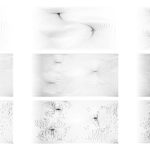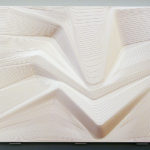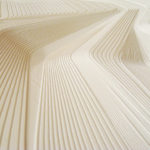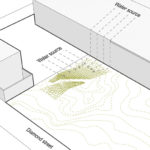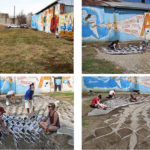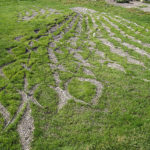2011 Boston Society of Architects Research Grant.
| Project | Self-initiated research project exploring customized geo-cells |
| Location | Philadelphia, PA |
| Date | Design/ constructed 2011 |
| Collaborators | Pennsylvania Horticultural Society, Philadelphia Water Department, Asociacion de Peurtorriquenos en Marcha for Everyone, and Joseph's Automotive Service |
As part of the “Incremental Infrastructure” prototypes, this intervention addressed the issue of infiltration in vacant sites.
A prevalent problem facing cities and regions is inadequate stormwater infrastructure. Sixteen billion gallons of raw sewage get dumped into Philadelphia’s rivers and streams each year after rain events. Because wet-weather flow is a dispersed problem, it has become increasingly clear that it requires a dispersed solution. Consequently, cities have started to explore alternatives for stormwater capture and treatment that are decentralized. Retention on individual lots can, in aggregate, have a significant impact on water quality. Re-imagined as such, these “incremental infrastructures” necessitate the exploration into infrastructural improvements that double as open space amenities.
This project explores the efficacy of customized substrates to develop alternatives to conventional on-site stormwater collection. Utilizing digital modeling and computer-controlled machinery, we fabricated custom geo-cells (three dimensional in-grade structures filled with gravel, soil or plants) to create an infiltration feature that combines permeability with a visibly expressive surface, thereby adding pattern and texture to what are typically uniform surfaces. Geo-cell configurations are currently limited by their uniform geometry; by varying the cellular shape, density and profile, they can be fabricated to produce a greater degree of variety and thus be more responsive to the opportunities of small urban sites.
The customized geo-cell configuration was developed using parametric software to visualize existing and redirected water flow patterns. These patterns helped determine the geo-cell size and distribution of material mixtures between grass seed and gravel. The prototype tested the use of both conventional and alternative plastics. One section was fabricated using petroleum-based plastics common to geo-cells. The second section was fabricated using newer, compostable corn-based plastics (polylactic acid biopolymer by Natureworks). Though becoming more widely used, PLA is currently limited to the packaging industry. This test is to determine its applicability to exterior application and its flexibility for customization.

